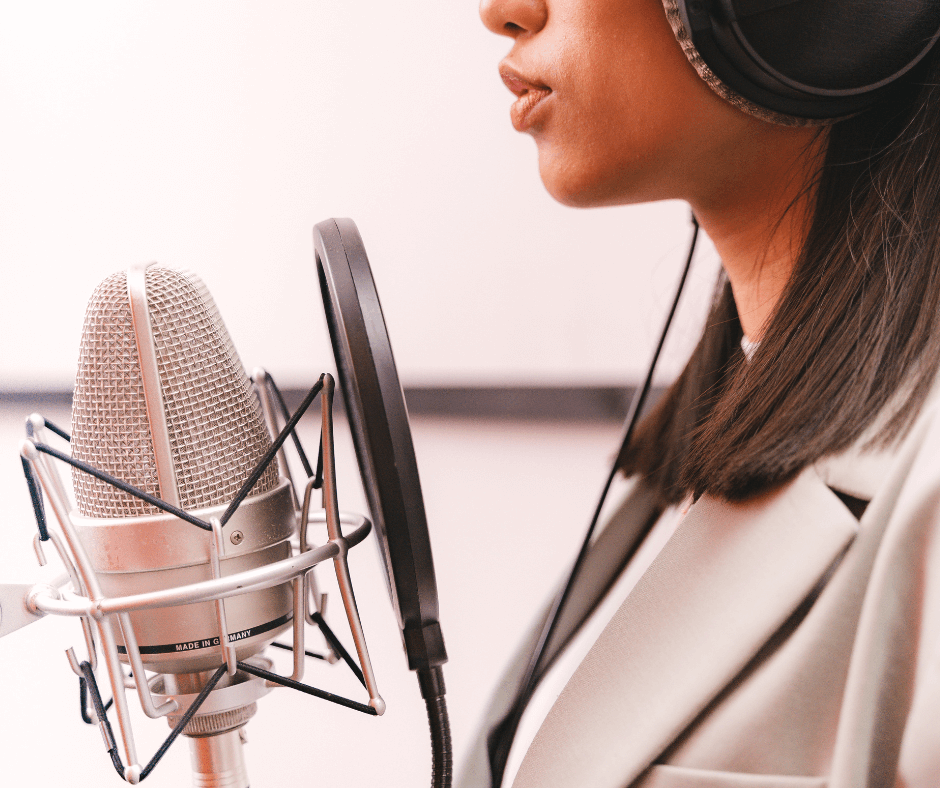4 Tips For Recording Your Own Songs

If you want to share your music, you have to record it. Your live performances are limited to attracting people only in your immediate vicinity, but by recording your songs, you have the opportunity to upload and share them with anyone in the world. You increase your exposure and open yourself up to different avenues of monetization. If nothing else, you’ll have a re-playable file of your song you can enjoy with family and friends!
Itching to get started? Here are 4 tips for recording your own songs.
1. INVEST IN THE RIGHT EQUIPMENT:
To record a song, you generally need two things: your instrument of choice and a great microphone. Here are a few tips to help you pick out what to use.
Instruments
What instrument you use is up to your preferences, capabilities, and the type of sound you want to create. However, if you’re wondering what would be most versatile for recording, digital keyboards are a good instrument to explore. These can produce the sounds of both a high-quality grand piano sound and other instruments. They also possess multiple recording options. For example, the Yamaha Piaggero NP-12 is the perfect first keyboard to consider using for your recordings: few other models can match its ease of use and stellar grand-piano voice.
Microphones
There is no replacement for a top-notch, reliable microphone. Fortunately, Shout4Music’s guide to the best mics for recording outlines that there are numerous great mics on the market right now, and you can choose which one to buy based on your budget and level of expertise. The budget-friendly USB mic Blue Yeti is perfect for beginners: it can attach to a multitude of studio gear, and its four pick-up patterns allow you to record audio in different modes and directions according to your needs. If you have more experience with mics or music production, you can try the Shure SM7B for its precise vocal reproduction and powerful cardioid direction pattern that delivers a buttery-smooth sound.
2. RECORD LOW-FIDELITY DRAFTS:
When using top-tier equipment, sometimes, after recording your music, you realize that no matter how great your apparatus is, your song isn’t what you want it to be yet. All first drafts are messy, though, and songwriting is no exception. Songwriter Priscilla Shaw suggests recording low-fidelity takes less-detailed, quick prototypes of your song. Ultimately, making these "drafts" will help you focus and improve on your melody and lyrics. For convenience, consider using your phone’s voice app for drafting and more sophisticated recording equipment—like a mic and computer—to record more final versions.
3. MASTER YOUR DIGITAL AUDIO WORKSTATION:
By now, you already have a rough acoustic version of your song that you're happy with. This is where you'll need to start sound mixing to polish the final version of your song. For this, you need a digital audio workstation (DAW). This software specializes in audio manipulation, so you can use it to edit and mix your audio, add special effects, and more. If you’re not willing to pay a premium for a more beginner-friendly workflow, our article ‘DAWS: What You Need to Know’ proposes Garageband or Logic. Leverage online tutorials to learn how to insert your desired audio effects.
4. CHOOSE THE CORRECT FILE TYPE:
Now that you've edited your song to excellence, there is a final, vital step you shouldn’t skip: exporting your song file properly. The file type you use will ultimately depend on which platform you want to publish your song on. For example, Spotify only supports FLAC and WAV formats, while Soundcloud also accepts AIFF and ALAC. Research the guidelines for your chosen platform. For safety, have a personal copy in a lossless file type—a format that compresses your song for efficiency and portability while still retaining its caliber. Lossless file types include FLAC, ALAC, and WMA.
Capturing your songs on file and sharing them opens your music up to more exposure—to friends, record labels, and anyone else who resonates with your sound. Follow the four tips above and give yourself and your supporters the best possible recordings. Good luck and have fun!
Exclusively submitted to Center Stage Music Center.
Submitted and written by: J Billman
